The sensational Mercedes-Benz 300 SL racing sports car debuted on a motorway on March 12, 1952. Commencing from 1954 until today, the highly successful competition car has greatly influenced the tradition of the Mercedes-Benz SL sports cars.
The Mercedes-Benz 300 SL (W 194) was presented in a stretch of motorway near Stuttgart on March 12, 1952. Two days before the event, the press office of Mercedes-Benz created an uproar as they sent out invitations to a select group of journalists.


It was not simply an announcement about the “new Mercedes-Benz 300 SL (super-light) sports car […] undertaking test drives in public for the first time”. It was also a clear declaration that Mercedes-Benz was to return to motorsport with this car. The press release stated that three 300 SLs were registered for “that famous Italian road race, the ‘Mille Miglia’, to be held on 3 and 4 May 1952”.
The invitation was sent out with a press photo that had a dynamically drawn sports car with the archetypal SL lines. The gullwing doors of the SL ended at the waistline of the body, although in the later models Mercedes-Benz made it easier to get in and out of by making the downward cut-outs larger.

The roll cage, a structure hidden under the body, was completely new. It was developed by Rudolf Uhlenhaut specifically for this racing sports car. It was made of thin tubing, subjected only to compression and tension, and weighed only 50 kilograms. The frame design was the main reason that the gullwing doors were hinged to the roof.
The M 194 engine came from the M 186 production engine of the Mercedes-Benz 300 (W 186) representation vehicle presented in 1951. The engineers increased the engine’s output to around 170 horsepower so that it could be used in the racing sports car. They additionally tilted the engine 50 degrees to the left and utilized dry-sump lubrication to drop the installation position.
They also adopted other technical elements from the Mercedes-Benz 300, the sporty-luxurious 300 S, and the legendary “Adenauer” saloon.
The 300 SL very first race at the 1952 Mille Miglia was highly successful, with the 300 SL taking out a second and fourth place for Mercedes-Benz. The 300 SL also achieved a triple victory in the sports car race in Bern, a one-two win in the grueling 24 hours of Le Mans, and a quadruple victory on the Nürburgring.

24 Hours of Le Mans 1952 where Mercedes-Benz achieved a one-two victory with its 300 SL racing sports cars

Nürburgring Anniversary Grand Prix for sports cars in 1952. Mercedes-Benz delivered a four-fold victory.


1952 Bern Grand Prix at Bremgarten Circuit (Switzerland).
The last race of the 300 SL was at the third Carrera Panamericana 1952 in Mexico, and by then, the engine output had increased to 180 hp. This race saw Karl Kling/Hans Klenk and Hermann Lang/Erwin Grupp claim a legendary one-two victory.

In 1953, Mercedes-Benz developed the W 194/11, the successor to the highly successful 300 SL racing sports car. Due to its characteristic front design, it was given the nickname “Hobel” (‘carpenter’s plane’). The W 194/11, however, was never entered in a race.



By 1954, Mercedes-Benz concentrated on developing the W 196 R racing car after deciding to enter into the Formula One World Championship.
Continuous Tradition of Production since 1954
The highly successful career of the 300 SL racing sports car in 1952 quickly translated to a demand for a production version. In February 1954, Mercedes-Benz responded by presenting the 300 SL (W 198) super sports coupé and the sporty yet sophisticated 190 SL (W 121). Ever since then the Stuttgart brand has constantly upheld the success story of the SL.
The 300 SL Coupé of the W 198 model series was released from 1954 to 1957, the open SL sports car from the W 121 model series was released from 1955 to 1963, and the 300 SL Roadster from the W 198 model series was produced from 1957 to 1963. The three sports cars defined much of the main characteristics of future SL generations.
The 230 SL from the W 113 model series was their successor and featured a safety body that Béla Barényi designed. It debuted in March 1963 and was nicknamed ‘Pagoda’ because of the unique shape of its hardtop.
Following from 1971 onwards, the R 107 was constructed for 18 successful years. It was also during this time that the roadster became the foundation for the luxurious SLC Coupés in the C 107 model series.
In 1989, the R 129 appeared as a pioneering technology car. In 2001, its successor, the R 230 introduced the folding Vario roof, which was a perfect mix of the pleasure of driving in a coupé and a roadster. The consistent lightweight design, along with its other features, attracted attention from 2012 onwards after the debut of the model series R 231 Mercedes-Benz SL.
In 2021, the new SL, being the R 232 model series will be launched, guiding the SL story into the future.
Mercedes-Benz 300 SL Coupé from the W 198 model series (1954-1957)
In February 1954, the 300 SL standard-production sports car (W 198) made its debut at the International Motor Sport Show in New York. It was showcased beside the near-production level prototype of the upcoming 190 SL Roadster (W 121). Both cars emphasized the direct tradition of standard-production sports cars carrying the race-proven SL moniker. The importer of Mercedes-Benz cars for the US market, Maximillian E. Hoffman, poured much effort to promote their production.

The characteristic gullwing doors of the 300 SL excited both the public and critics alike. The shape of the coupé was reminiscent of the racing sports car and its roll cage that required such technical details from the competition car. It is one of the things that sets the 300 SL apart from other standard-production sports cars of its time. The design of the car required that the doors be hinged on the roof, earning for itself the nickname “Gullwing” and “Papillon” which means butterfly.

Mercedes-Benz fitted a straight six-cylinder engine for the standard-production sports car that could generate 215 horsepower and, depending on the rear axle ratio, could reach a top speed of up to 260 kph- a speed that was quite impressive for road-going sports cars of its time. This was highlighted by the 300 SL’s numerous successes in races and rallies.

The 300 SL was a super sports car and its price of DM 29,000 when it was released reflected this. To compare, the predecessor of the S-Class of today, the Mercedes-Benz 220 (W 180), was priced at DM 12,500 at the time.
In the 1950s, the 300 SL became an iconic car and its attraction is still relevant today with an international jury of experts voting the vehicle to be the “Sports Car of the Century” in 1999.
From 1954 to 1957, Mercedes-Benz produced a total of 1,400 of the 300 SL Coupés. 29 of those vehicles had an aluminum body, and one unit was produced with a GRP (glass-fiber reinforced plastic) body, which was a completely new material at the time and was used only for testing purposes.
Mercedes-Benz 190 SL of the W 121 Model Series (1955-1963)
Mercedes-Benz designed the 190 SL to be an elegant, open sports car. In 1954, it was presented at the International Motor Sports Show in New York along with the 300 SL. Mercedes-Benz designer Josef Müller recalled in 1957:
“Due to its high standard of comfort, [it is] intended for a group of buyers wishing to cover even long distances at high cruising speeds in this car of highly sporty outer appearance.”

The 190 SL body design was very similar to the Gullwing, but as a two-seater roadster. It was offered with a fabric top and with a removable hardtop, and the hardtop has the option of having a fabric top or not. There is also the option to have a third seat added and it was placed in the rear at right angles to the direction of travel.
It was produced from 1955-1963 with the 190 SL improved with the later releases. During its production years, the Sindelfingen plant manufactured a total of 25,881 units.

Mercedes-Benz 300 SL Roadster of the W 198 Model Series (1957-1963)
In 1957, the “Gullwing” coupe was replaced by the 300 SL Roadster and like its predecessor, the car was developed upon the suggestion of Maximillian E. Hoffmann. The side sections of the roll cage were modified for the roadster, allowing for the sill height to be reduced to an extent that normal doors could be utilized for the vehicle.

On February 8, 1963, the Sindelfingen plant discontinued the production of the 300 SL Roadster and the 190 SL at the same time. By then, they had produced a total of 1,858 open sports cars.
Both W 198 model series versions – the roadster and the gullwing coupe – were considered collectors’ cars from their first release. They are considered one of the most coveted and highly prized classics today.

Mercedes-Benz of the W 113 Model Series (1963-1971)
At the 1963 Geneva Motor Show, Mercedes-Benz launched the new 230 SL (W 113). Designed as a replacement for the 190 SL (W 121) and 300 SL Roadster (W 198), it was a comfortable, high-performance two-seater touring car.

The exterior has clean, straight lines, with the SL front bearing the large central Mercedes star. It had an optional hardtop that had high windows and a concave-shaped roof that was supported by narrow pillars that looks like Asian temple buildings, so it was not a surprise that it was immediately given the nickname “Pagoda”.
The 230 SL was eventually replaced by the Mercedes-Benz 250 SL in 1967. Most of the changes performed occurred within the engine and brake system.

Less than a year after it made its debut, Mercedes-Benz replaced the 250 SL with the 280 SL, which featured a 2.8-liter engine with an output of 170 horsepower.
Overall, from 1963-1971, Mercedes-Benz produced 48,912 units of the “Pagoda” SLs of the W 113 model series.
Mercedes-Benz SL from the R 107 Model Series (1971-1989)
It was in the spring of 1971 that Mercedes-Benz launched the SL of the R 107 model series, starting with the 350 SL. It was the first time that the Mercedes-Benz SL was given an eight-cylinder engine. In 1973, the 450 SL was released.

The model series embodied elegance and strength, and the crash performance of the open-top two-seater was truly innovative. From a technical standpoint, this could be seen from the carefully defined crumble behavior of the body, interior, as well as the bodyshell structure and it was designed consistently to accommodate safety criteria.
The model series had an 18-year long production period, and it received a variety of six- and eight-cylinder engines, with the model designations equally as diverse.

The 18-year production period of the R 107 model series set an internal brand record with the Sindelfingen plant producing a total of 237,287 open sports cars, a testimony to the huge popularity of the model series.
In addition to the open-top SL vehicles, from 1971-1981, the SLC luxury-class coupés of the C 107 model series were also built, producing a total of 62,888 cars during this time span.
Mercedes-Benz SL from the R 129 Model Series (1989-2001)
Mercedes-Benz presented the SL from the R 129 model series at the 1989 Geneva Motor Show.
The overall effect of the slightly wedge-shaped body, split front spoiler, flared wheel arches, steeply raked windscreen, alloy wheels, and modeled rear, which was all standard equipment, made a huge impact on the customers, and production capacity was soon fully booked. There were even customers who agreed to delivery times that took several years.

The summer of 1993 saw Mercedes-Benz start using the new model designations for its open sports cars, placing an SL before the three-digit number that indicates the engine capacity. So, models like 600 SL became the SL 600, which is the model designation that is still being used today.
After 204,940 cars and twelve years of production, the summer of 2001 saw the end of the production run of the R 129 model series. Despite the total number of units for the latest SL generation being lower than the R 107, the R 129 was more successful, with an annual production number of 16,500 units per year.

Mercedes-Benz SL from Model Series R 230 (2001-2012)
Mercedes-Benz introduced the next SL generation with the internal code R 230 in 2001. The most striking feature of the new model was the steel folding Vario roof which was the first time in Mercedes-Benz history that it enabled both a coupé and an open car in one. Within 16 seconds, the car’s transformation is complete.

The R 230 model series’ design brought together tradition and innovation in the beautiful details. The marked air vents in the front wings were reminiscent of the 1950s legendary 300 SL with the side air openings having a narrow, ridge-like profiles which was also influenced by the W 198.
Since the release of the “Pagoda”, Mercedes-Benz has been at the forefront of active and passive safety in open sports cars. With the release of the R 230 model series, Mercedes-Benz outdid themselves in terms of safety standards especially with vehicle dynamics systems like Active Body Control ABC, anti-slip control ASR, Electronic Stability program ESP®, anti-slip control ASR, and structural safety aspects of the body of the car in a lot of different accident scenarios.

For occupant protection, they also added two-stage airbags for both driver and front passenger, integral seats, head-thorax bags in the doors, belt force limiters, high-performance belt tensioners, and a sensor-controlled roll-over bar which also functions even if the folding Vario roof is closed.
The Mercedes-Benz plant in Bremen produced 169,433 units of R 230 sports cars from 2001 to 2012. With 99,886 units, the most successful production vehicle was the SL 500 although the three AMG models also got a large chunk of the production units with a combined total of 29,570 units.
Mercedes-Benz SL of the R 231 Model Series (2012-2020)
To mark the 60th anniversary of the SL, Mercedes-Benz launched the R 231 model series at the North American International Auto Show (NAIAS) in Detroit in January 2012.

Reducing the weight of the car was one of the main focus of the new design and they succeeded in making the aluminum bodyshell weight only 256 kilograms. Despite the larger size of the car, they were able to make it 110 kilograms lighter than its predecessor, and it also had 20 percent more torsional rigidity.
They used a composite construction of steel and plastic for the boot lid, and a magnesium frame with plastic paneling was used for the electro hydraulically folding roof.

For the safety features, the R 231 came with spring-loaded roll-over bars behind the driver and front passenger seats, airbags and sidebags for the driver and front passenger, head airbags in the doors, and an active bonnet to protect even the pedestrians in case of a collision.
The first models launched were the SL 350 (V6 engine with 306 horsepower) and the SL 500 (V8 engine with 435 horspower).
By March 2012, they also launched the high-performance variants SL 63 AMG (395 kW/537hp) and the SL 65 AMG (V12 engine with 463kW/630hp). They only used automatic transmissions with seven or nine gears (9G-TRONIC from April 2016 onwards).


[Source: Daimler]


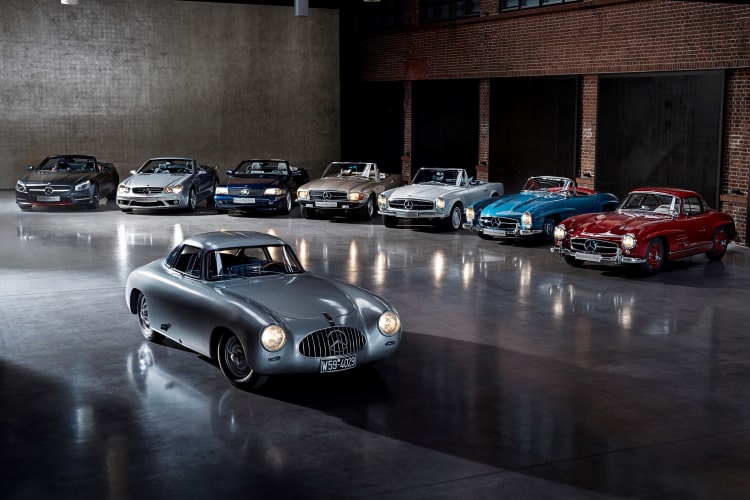

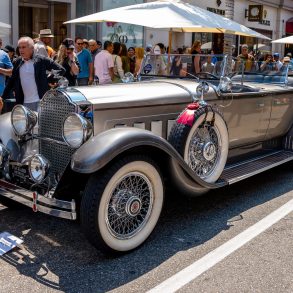
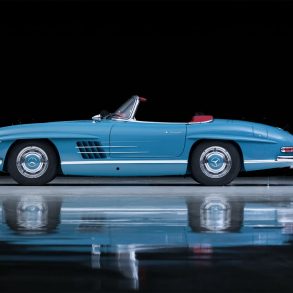
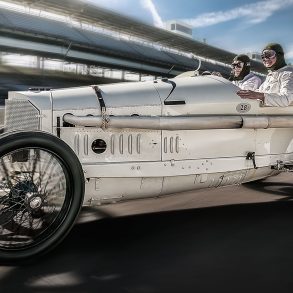
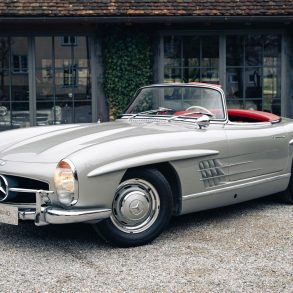
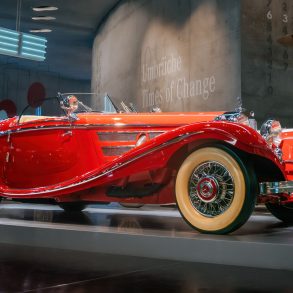
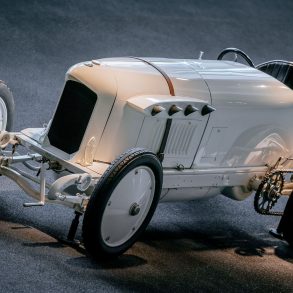

Great recap of the SL history, over many decades !
One minor correction I note is that the SL63 AMG WAS INTRODUCED IN 2009, not 2012.
chet
JUST WONDERFUL TO SEE
THE HISTROREIC PHOTOS,
DOES ANY VIEWER
KNOW WHY
MERCEDES CHOSE TO RUN
CARS IN SWISS EVENT’
IN COLORS
OF MAROON
GREEN AND
BLUE, AND REVERT
TO SILVER FOR
NEXT EVENT,?
JIM SITZ
Beauty and a beast! I have a 1998 SLK-230 that I still drive daily. Wonderful legacy of automobiles!
Excellent article. Thank you
Excellent article. I love my R107 and use it every day summer and winter, it’s got 138,000 miles on the clock and is still a fantastic car to drive, owned it for 6 years and hope to keep it for a very long time.